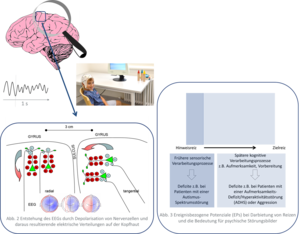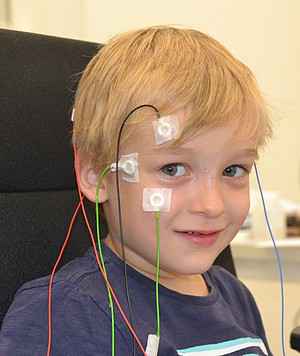Sie befinden sich hier
Inhalt

Medical Director of the Clinic of Child and
Adolescent Psychiatry and Psychotherapy
Deputy Director of the Central Institute of Mental Health
Child and Adolescent Psychiatry and Psychotherapy
The main research areas of the child and adolescent psychiatry are a) developmental trajectories of child and adolescent psychiatric disorders with associated risks and protective factors, b) their underlying etiological and neurobiological mechanisms, c) development of individualized treatment strategies, and d) development of evidence-based clinical guidelines. These research foci are mainly investigated within national and international research networks and multicenter studies. In the coming years, new longitudinal epidemiological cohort studies will be investigated in order to characterize disorder-specific and overarching pathophysiological mechanisms and their developmental trajectories. Of central interest are developmental aspects and developmental risks, multimodality, and ecological aspects of our longitudinal and clinical-translational studies.
These project research findings will help stratify the heterogeneity of disorders, provide specific diagnostic, prognostic, and treatment-related biomarkers, and promote more effective personalized approaches to prevention and treatment. Another research focus is the linkage between clinical treatment and research. To this end, the two innovative service models "Adolescent Center-Emotion Regulation" and "Adolescent Center-Psychosis" will be scientifically evaluated. In addition, we want to use the opportunity to integrate scientific evidence into the treatment of those affected, which is why it is important for us to contribute our expertise to the creation and regular updating of evidence-based S3 guidelines.
The five working groups of the department (Attention Deficit Hyperactivity Disorder (ADHD), Autism, Developmental Neurosciences in Psychiatry, Clinical Neurophysiology of Childhood and Adolescence, Clinical Psychopharmacology of Childhood and Adolescence) are strongly networked among each other, focusing on different topics and different methods.
National and international collaborative research projects
G-BA: Update of the S3 Guideline - Attention Deficit Hyperactivity Disorder (ADHD) in childhood, adolescence and adulthood. Project duration: 10/2022 – 09/2025
DFG: The role of pandemic and individual vulnerability in longitudinal cohorts across the life span: refined models of neurosociobehavioral pathways into substance (ab)use?. Project duration: 01/2021 – 01/2024
EU: Reducing the impact of major environmental challenges on mental health (environmental). Project duration: 06/2022 - 05/2027
EU: Prevention and Remediation of Insulin Multimorbidity in Europe (PRIME). Project duration: 05/2020 – 12/2024
EU: Autism Innovative Medicine Studies (AIMS-II). Identifying biomarkers for autism. Project duration: 06/2018 – 05/2025
BMBF: IMAC-mind (Improving Mental Health and Reducing Addiction in Childhood and Adolescence through Mindfulness: Mechanisms, Prevention and Treatment). Project duration: 11/2017 – 08/2023
- Project: Identification of early bio-psycho-social risks and resilience factors and etiological pathways
- Project: Development of screening and prevention tools
Clinical Trial: Mental Health in Refugees and Asylum Seekers: Tiered model of care to promote refugee mental health (MEHIRA). ClinicalTrails.gov identifier: NCT03109028. Project duration: 03/2017 – 02/2020
EU: Eat2BeNice: Study of the effect of diet and lifestyle on impulsive, compulsive, and externalizing behavior. Project duration: 09/2017 – 02/2023
BMBF: Evidence-based Stepped Care of ADHD along the lifespan (ESCAlife). Project duration: 09/2015 – 12/2022, coordinator
Legend: DFG = German Research Foundation, BMBF = Federal Ministry of Education and Research, EU = European Union, G-BA = Federal Join Committee
Publications
- Identifying biological markers for improved precision medicine in psychiatry.
Quinlan EB, Banaschewski T, […], Schumann G; IMAGEN Consortium. (2020) Mol Psychiatry Feb;25(2):243-253. - Emerging challenges in pharmacotherapy research on attention-deficit hyperactivity disorder-outcome measures beyond symptom control and clinical trials.
Wong ICK, Banaschewski T, Buitelaar J, Cortese S, Döpfner M, Simonoff E, Coghill D; European ADHD Guidelines Group. (2019) Lancet Psychiatry Jun;6(6):528-537. - Association of Gray Matter and Personality Development With Increased Drunkenness Frequency During Adolescence.
Robert GH, Luo Q, Yu T, Chu C, Ing A, Jia T, Papadopoulos Orfanos D, Burke-Quinlan E, Desrivières S, Ruggeri B, Spechler P, Chaarani B, Tay N, Banaschewski T, […], Schumann G; IMAGEN Consortium. (2019) JAMA Psychiatry Dec 18:e194063. - Association of a Schizophrenia-Risk Nonsynonymous Variant With Putamen Volume in Adolescents: A Voxelwise and Genome-Wide Association Study.
Luo Q, Chen Q, Wang W, Desrivières S, Quinlan EB, Jia T, Macare C, Robert GH, Cui J, Guedj M, Palaniyappan L, Kherif F, Banaschewski T, […], Feng J; IMAGEN consortium. (2019) JAMA Psychiatry Apr 1;76(4):435-445. - Allele-Specific Methylation of SPDEF: A Novel Moderator of Psychosocial Stress and Substance Abuse.
Tay N, Macare C, Liu Y, Ruggeri B, Jia T, Chu C, Biondo F, Ing A, Luo Q, Sarkysian D, Banaschewski T, […], Schumann G; IMAGEN Consortium. (2019) Am J Psychiatry Feb 1;176(2):146-155. - Brain Imaging of the Cortex in ADHD: A Coordinated Analysis of Large-Scale Clinical and Population-Based Samples.
Hoogman M, Muetzel R, Guimaraes JP, Shumskaya E, Mennes M, Zwiers MP, Jahanshad N, Sudre G, Wolfers T, Earl EA, Soliva Vila JC, Vives-Gilabert Y, Khadka S, Novotny SE, Hartman CA, Heslenfeld DJ, Schweren LJS, Ambrosino S, Oranje B, de Zeeuw P, Chaim-Avancini TM, Rosa PGP, Zanetti MV, Malpas CB, Kohls G, von Polier GG, Seitz J, Biederman J, Doyle AE, Dale AM, van Erp TGM, Epstein JN, Jernigan TL, Baur-Streubel R, Ziegler GC, Zierhut KC, Schrantee A, Høvik MF, Lundervold AJ, Kelly C, McCarthy H, Skokauskas N, O'Gorman Tuura RL, Calvo A, Lera-Miguel S, Nicolau R, Chantiluke KC, Christakou A, Vance A, Cercignani M, Gabel MC, Asherson P, Baumeister S, Brandeis D, Hohmann S, Bramati IE, Tovar-Moll F, Fallgatter AJ, Kardatzki B, Schwarz L, Anikin A, Baranov A, Gogberashvili T, Kapilushniy D, Solovieva A, El Marroun H, White T, Karkashadze G, Namazova-Baranova L, Ethofer T, Mattos P, Banaschewski T, […] Franke B. (2019) Am J Psychiatry Jul 1;176(7):531-542. - Do ADHD-impulsivity and BMI have shared polygenic and neural correlates?
Barker ED, Ing A, Biondo F, Jia T, Pingault JB, Du Rietz E, Zhang Y, Ruggeri B, Banaschewski T, […], Schumann G; IMAGEN Consortium. (2019) Mol Psychiatry Jun 21:10.1038/s41380-019-0444-y. - Neural Correlates of Failed Inhibitory Control as an Early Marker of Disordered Eating in Adolescents.
Bartholdy S, O'Daly OG, Campbell IC, Banaschewski T, […], Schmidt U; IMAGEN Consortium. (2019) Biol Psychiatry Jun 1;85(11):956-965. - Identification of neurobehavioural symptom groups based on shared brain mechanisms.
Ing A, Sämann PG, Chu C, Tay N, Biondo F, Robert G, Jia T, Wolfers T, Desrivières S, Banaschewski T, […], Schumann G; IMAGEN Consortium. (2019) Nat Hum Behav Dec;3(12):1306-1318. - Comparative efficacy and tolerability of medications for attention-deficit hyperactivity disorder in children, adolescents, and adults: a systematic review and network meta-analysis.
Cortese S, Adamo N, Del Giovane C, Mohr-Jensen C, Hayes AJ, Carucci S, Atkinson, LZ, Tessari L., Banaschewski T, […], Cipriani A. (2018) Lancet Psychiatry 5(9), 727-738.
Photo Credits: #1 Zentralinstitut für Seelische Gesundheit - Mannheim
Kontextspalte
Contact
Central Institute of Mental Health
J 5
68159 Mannheim
Phone +49 621 1703-4501
tobias.banaschewski@zi-mannheim.de


